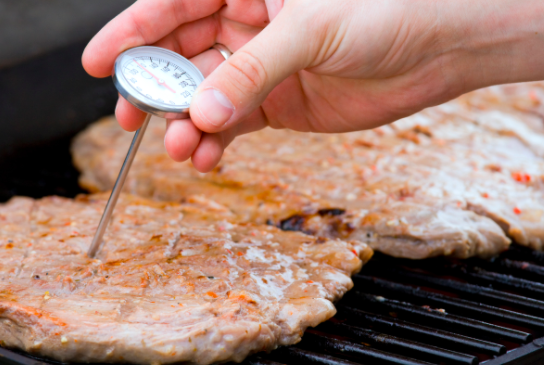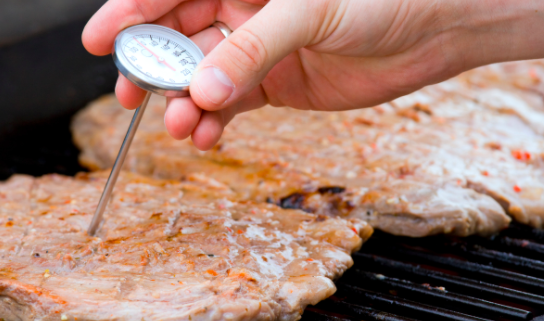Practicing Safe Food Handling for Food Safety Education Month
 Did you know that about 1 in 6 Americans will get sick from a foodborne illness? There are hundreds of different ways that food can become contaminated with pathogens that cause illness. It’s important to always practice good food hygiene, whether you are the person cooking or you’re having a prepared meal. This September, take the time to learn about more ways to prevent illness caused by contaminated food for Food Safety Education Month.
Did you know that about 1 in 6 Americans will get sick from a foodborne illness? There are hundreds of different ways that food can become contaminated with pathogens that cause illness. It’s important to always practice good food hygiene, whether you are the person cooking or you’re having a prepared meal. This September, take the time to learn about more ways to prevent illness caused by contaminated food for Food Safety Education Month.
From the field the food is grown in, to the pots that it will eventually be cooked in, there are countless chances for foods to come in contact with harmful bacteria. Not all foodborne illnesses can be prevented, however, if you are the person preparing the meal there are a few extra steps you can take to keep yourself and others safe.
Perhaps you are not a big fan of cooking and most of your meals are prepared in the store or a restaurant. While you may have less control over some of the steps to take to limit contamination, there are still safety techniques you can practice.
In the Home
A foodborne illness can be fatal, especially in those that are immunocompromised. Your kitchen is full of bacteria that can be harmful to the human body. Here are some practices that you can put into place to limit your risk of developing a foodborne illness:
Wash: You may be surprised by how many people do not wash fruits and vegetables before eating them. Always clean your produce before consuming them. It may be beneficial to buy a scrub bush dedicated to cleaning your produce.
Temperature Check: You should have a food thermometer in your kitchen to ensure that all of your food is cooked to the proper temperature. Each meat has a different temperature that it needs to reach to kill off the harmful bacteria. Beef, pork, veal, fish, and lamb should be cooked to 145 degrees F. Ground beef, veal, and lamb should be cooked to 160 degrees F. Eggs should be cooked to 160 degrees F. Finally, poultry should be cooked to 165 degrees F.
Separate: If you are using a chopping board for chicken, you should be using a different one for vegetables. Be sure to wipe down the surfaces the cutting board is on between uses. This will limit the amount of cross-contamination that can occur.
Storage: Before putting food in the freezer or refrigerator, make sure that it is at a temperature that will keep your food cool enough. When food is stored in the “danger zone,” a temperature between 40 degrees F and 140 degrees F, it is more prone to bacterial growth. Also, be sure to store your food in the proper area right away to limit cross-contamination.
Prepared Foods
When you get food from a restaurant or supermarket you may think all the proper food safety protocol has been followed. However, some places may not be as careful as others when it comes to safe food handling. Here are a few tips to mitigate your risk of falling ill:
- Throw out leftovers after 3-4 days.
- Don’t order any food raw unless it’s from a trusted facility.
- Wash your hands before opening and handling food.
- If you are reheating food, make sure it is reheated to the proper temperature.
- Put your leftovers in an airtight container.
This September pass on some of these useful tips and tricks to make sure everyone in your life stays healthy.
Your Turn to Action: What are you going to do this month to stay safe from foodborne illness? Let me know in the comments below.


Leave a Reply
Want to join the discussion?Feel free to contribute!